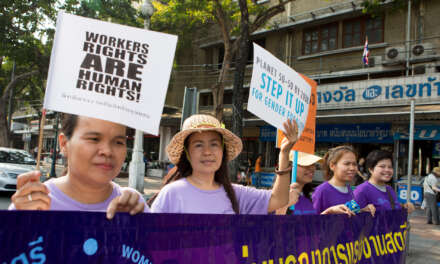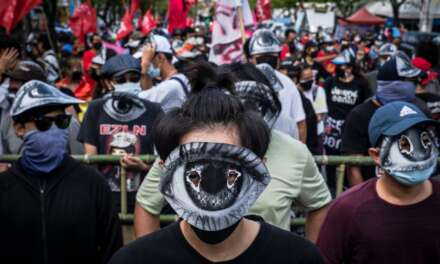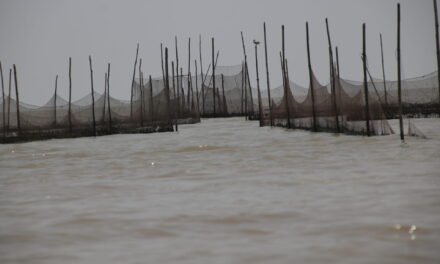As of 27 June 2019, at least 28 construction workers were confirmed dead, including five women and rescue teams had pulled out another 26 injured. Amongst the injured were two 16-year-olds, a girl and a boy. All victims are now at Preah Sihanouk Referral Hospital. The victims were migrant workers from other Cambodian provinces.
The evening prior to the accident, an eye-witness reported that two trucks transported between 30 – 40 workers into the construction site. These workers stayed on the ground floor of the collapsed building along with other workers’ families. One worker said that the company had very poor health and safety standards. At least 60 workers and their families used the building as their accommodation and workplace and the building collapsed whilst they were sleeping.
The building was being constructed by a Chinese company named Xi Gang Tang Gong Gou Ji Haisao which was publicly known as lacking legal authorisation to carry out construction activities from the authorities. The construction site was on 15×30 square meters of land located in an urban area of Sihanoukville Province and was 80% completed despite receiving two stop-work notices from authorities.
On 18 October 2018, the Ministry of Land Management, Urban Planning and Construction (MLMUPC) found that there were many unauthorised construction projects in Sihanoukville Province and that illegal construction activities affect the public environment and beauty as well lead to poor construction quality.
“Urban development must prioritise preventing environmental impact, as well as on sustainability and public safety which are the role of State. Any violations of laws or government instructions are illegal actions and the law must be strictly enforced for the perpetrator in order to make them accountable”, said Mr Sok Kin, president of Building and Wood Workers Trade Union Federation of Cambodia (BWTUC).
One day after the accident, the government established a committee to inspect and investigate the building collapse in Sihanoukville. The committee’s mandate is to review the technical inspection of buildings and compliance of building standards on construction sites in Sihanoukville and the prevention of risks.
This is not the first building collapse in Cambodia’s construction history. In the middle of 2018, the 23rd floor of the Mekong View 6 collapsed, killing 2 workers and injuring at least 5 others. In mid-August 2018, an underconstruction building in Russei Keo District, Phnom Penh collapsed whilst workers were working. Fortunately, nobody was injured. In May 2013, the roof of Wing Star Shoes footwear factory in Kampong Speu Province collapsed, killing a 15-year-old girl and a 24-year-old man. In April 2016, there was also a bridge collapse at Top World Garment factory. Often, construction projects use sub-contractors who provide unreasonable working conditions, violate workers’ fundamental legal rights and do not fulfil their duties to guarantee workers’ health and safety.
“Implementation of Occupational Health and Safety standards on construction sites must be strictly and effectively enforced. Taking the workplace as accommodation risks workers’ and their families’ lives. The builder and owner must be accountable and responsible for their crimes. Compensation is not enough,” said Mr. Khun Tharo, program manager at Center for Alliance of Labor and Human Rights (CENTRAL).
Having seen this horrific event, we call upon the Royal Government of Cambodia and private developers to take immediate action for a long-term solution to prevent similar tragedies in the future by implementing the following recommendations:
- An immediate cessation of all construction projects in Sihanoukville until the completion of a proper investigation and inspection by independent experts to ensure that all construction projects are compliant with both the law and safety standards. This measure must also be enforced for all construction projects across Cambodia.
- Establish an effective, transparent and accountable inspectorate to ensure proper implementation of safety standards for construction workers in Cambodia.
- Pay appropriate damages and compensation to victims including their families and dependents.
- Conduct a thorough investigation to find and punish the perpetrators in accordance with the laws of the Kingdom of Cambodia. Hold all government authorities responsible accountable for the accident to the same standards as the perpetrator.
- The immediate cessation of all unauthorised sub-contracting activities and guaranteed implementation of safety standards at all construction sites.
This joint statement is endorsed by;
1. The Cambodian Human Rights and Development Association (ADHOC), Cambodia
2. Sahmakum Teang Tnaut (STT), Cambodia
3. Cambodia Youth Network (CYN), Cambodia
4. Cambodian Alliance of Trade Unions (CATU), Cambodia
5. Independent Trade Union Federation (INTUFE), Cambodia
6. Committee for Free and Fair Elections in Cambodia (COMFREL), Cambodia
7. Coalition of Cambodian Farmers Community Association (CCFC), Cambodia
8. The Cambodian Food and Service Workers Federation (CFSWF), Cambodia
9. Building and Wood Workers Trade Union Federation of Cambodia (BWTUC), Cambodia
10. Independent Democratic of Informal Economy Association (IDEA), Cambodia
11. Cambodia Tourism Workers Union Federation (CTWUF), Cambodia
12. Cambodian Center for Human Rights (CCHR), Cambodia
13. National Independent Federation of Textile Union of Cambodia (NIFTUC), Cambodia
14. Labor Rights Supported Union of Khmer Employee of Nagaworld (L.R.S.U), Cambodia
15. Center for Alliance of Labor and Human Rights (CENTRAL), Cambodia
16. Union Alliance of Labor (UCL), Cambodia
17. Free Trade Union of Workers of Kingdom of Cambodia (FTUWKC), Cambodia
18. Cambodian League for the Promotion and Defense of Human Rights (LICADHO), Cambodia
19. Minority Rights Organization (MIRO), Cambodia
20. ActionAid, Cambodia
21. Klahaan Organization, Cambodia
22. Solidarity Center (SC/ACILS), Cambodia
23. Building and Wood Workers International (BWI), Asia Pacific
24. Public Services International (PSI)
25. NaZemi, Czech Republic
26. Solidar Suisse, (Switzerland)
27. Youth Resource Development Program (YRDP), Cambodia
28. The Cambodian Human Rights Action Coalition (CHRAC), Cambodia
29. Cambodia Labor Confederation (CLC), Cambodia
30. Asia Monitor Resource Centre (AMRC), Hong Kong
31. Globalization Monitor, Hong Kong
32. Borderless Movement, Hong Kong
33. Labour Education and Service Network, Hong Kong
34. Yokohama Action Research, Japan
35. China Labour Bulletin, Hong Kong
36. JTNC Watch, Japan
37. China Labour Bulletin, Hong Kong
38. Maquila Solidarity Network – MSN, Canada
39. Civil Rights Defenders (CRD), Sweden
40. Future In Our Hands (FIOH), Norway
41. Local Initiative for OHS Network, Indonesia
42. Asia Floor Wage Alliance (AFWA), Asia Regional
43. LIPS – Sedane Labour Centre, Indonesia
44. Serikat Pekerja Nasional (SPN), Indonesia
45. Serikat Buruh Indonesia (GSBI), Indonesia
46. Federasi Buruh Lintas Pabrik (FBLP), Indonesia
47. Konfederasi Aliansi Serikat Buruh (KASBI), Indonesia
48. Trade Union Rights Center (TURC), Indonesia
49. Social Action for Community and Development (SACD), Indonesia
50. Korean House for International Solidarity, South Korea
51. Clean Clothes Campaign, (South East Asia)
52. Clean Clothes Campaign, (East Asia)
53. Norwegian People’s Aid (NPA), Norway
54. MAP Foundation, Thailand
55. Workers Assistance Center, Inc., Philippines
56. FOCUS on Global South, Thailand
57. Fair Action, Sweden
58. Garment and Allied Workers Union-North India
59. National Free Trade Union, Sri Lanka
60. Dabindu Collective, Sri Lanka
61. TWFI (HMS), India
62. Garment Labour Union (GLU), Sri Lanka
63. Free Trade Zones & General Services Employees Union (FTZ&GSEU), Sri Lanka
64. Workers Empowerment (Hong Kong)
65. Equitable Cambodia (EC), Cambodia
66. Magnus Kjellson, (Labor Rights Advocate), Sweden
67. Karins Ström, (Labor Rights Advocate), Sweden
68. Pheareak Ly, (Labor Rights Advocate), Cambodia
69. Pech Polet, (Human Rights Advocate), Cambodia
70. Sen Chanthou, (Human Rights Advocate), Cambodia
71. Chrek Sophea, (Human Rights Advocate), Cambodia
72. Chroeung Saphoeurt, (Human Rights Advocate), Cambodia
73. Rita Olivia Tambunan, (Labor Rights Advocate), Indonesia
74. Boeung Pram community, Cambodia
75. Sdey Krom Fishery community, Cambodia
76. Bos Sa Am community, Cambodia
77. Anlong Run community, Cambodia
78. Andoung Kantuot community, Cambodia
79. Phum Kdeb Thmor land community, Cambodia
80. Phum Ou Svay land community, Cambodia
81. Phum Sela Khmer land community, Cambodia
82. Phum Steung Bort land community, Cambodia
83. Phum Phsar Kandal land community, Cambodia
84. Ta Trai land community, Cambodia
85. Sre Prang community, Cambodia
86. Chikor Krom community, Cambodia
87. Chikor Leu community, Cambodia
88. Koh Sralao fishery community, Cambodia
89. Somros Koh Sdach fishery community, Cambodia
90. Koh Sdach land community, Cambodia
91. Pich Changva Laor Chert forest community, Cambodia
92. Steung Khsach Sar forest community, Cambodia
93. Toul Samrong community, Cambodia
94. Phnom Neang Kongrei community, Cambodia
95. Fishery Resource Development community, Cambodia
96. Fishery community, Cambodia
97. Prey Peay fishery community, Cambodia
98. Phnom Tnort community, Cambodia
99. Kampong Samaki community, Cambodia
100.Samaki Phnom Chorm Mlou community, Cambodia
101.Trapaing Sangke community, Cambodia

![[Cambodia] Occupational Health and Safety for Construction Workers and Safe Building Standards Must Be Guaranteed](https://focusweb.org/wp-content/uploads/2019/07/Cambodia-Building-Collapse-1153x640.jpg)








